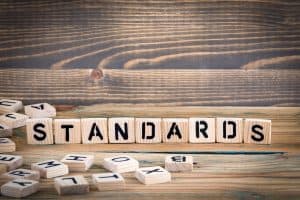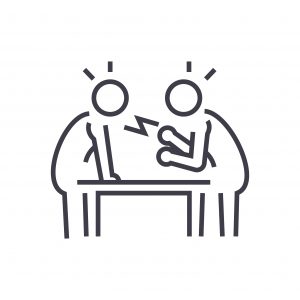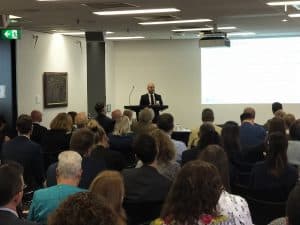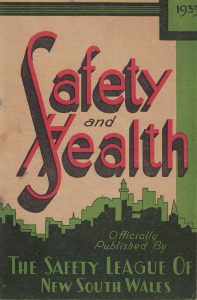 The publication date for the first truly international Standard on occupational health and safety (OHS) management systems, ISO45001, the rhetoric is heating up in Australia.
The publication date for the first truly international Standard on occupational health and safety (OHS) management systems, ISO45001, the rhetoric is heating up in Australia.
Category: Uncategorized
#MeToo, #TimesUp and #OHS
 Being International Women’s Day, the media is awash with articles about pay rates, gender equality and sexual harassment. One of those articles is written by Sarah Ralph of Norton Rose Fullbright. Ralph provides a good summary of the current gender issues and recent media attention (may require registration but it’s free). She makes several recommendations for how to reduce the risk of sexual harassment and unwanted media attention. Below those recommendations are looked at from the occupational health and safety (OHS) perspective to see how OHS can help reduce the psychological harm. Continue reading “#MeToo, #TimesUp and #OHS”
Being International Women’s Day, the media is awash with articles about pay rates, gender equality and sexual harassment. One of those articles is written by Sarah Ralph of Norton Rose Fullbright. Ralph provides a good summary of the current gender issues and recent media attention (may require registration but it’s free). She makes several recommendations for how to reduce the risk of sexual harassment and unwanted media attention. Below those recommendations are looked at from the occupational health and safety (OHS) perspective to see how OHS can help reduce the psychological harm. Continue reading “#MeToo, #TimesUp and #OHS”
How bad is workplace mental health and what can be done about it
 The recent RTW Forum in Melbourne had one speaker who analysed the workers compensation data for mental health claims. Dr Shannon Gray was able to draw some clear statements on workplace mental health from Australia’s national claims data and provide clues on what the workplace safety profession needs to do to reduce psychological harm.
The recent RTW Forum in Melbourne had one speaker who analysed the workers compensation data for mental health claims. Dr Shannon Gray was able to draw some clear statements on workplace mental health from Australia’s national claims data and provide clues on what the workplace safety profession needs to do to reduce psychological harm.
Gray and other speakers at the forum had access to a lot more data than has been available in the last few decades and they, rightly, continued to stress caution in analysis.
Safety in Work-For-The-Dole gets a hammering
 Journalist Alice Workman drew social media’s attention to a dismissive answer by Australia’s Minister for Small and Family Business, the Workplace and Deregulation, Craig Laundy in Parliament last week. Laundy was asked by the Opposition Labor Party’s Ed Husic about a workplace fatality report and the safety performance of the Work-For-The-Dole scheme. The discussion provides a glimpse into the politics of occupational health and safety (OHS).
Journalist Alice Workman drew social media’s attention to a dismissive answer by Australia’s Minister for Small and Family Business, the Workplace and Deregulation, Craig Laundy in Parliament last week. Laundy was asked by the Opposition Labor Party’s Ed Husic about a workplace fatality report and the safety performance of the Work-For-The-Dole scheme. The discussion provides a glimpse into the politics of occupational health and safety (OHS).
According to
Perhaps EAPs need to evolve more
 Last month a provider of Employee Assistance Programs (EAPs) circulated a media statement about a new health and wellbeing model that
Last month a provider of Employee Assistance Programs (EAPs) circulated a media statement about a new health and wellbeing model that
“captures the essence of the shift towards holistic health and wellbeing for employees.”
This sounds positive and given the increasing emphasis on the prevention of harm from occupational health and safety (OHS) regulators and the evolution of organisational culture, SafetyAtWorkBlog approached
Safety insights from Return-To-Work Forum
 A lot of statistics were presented at a workers’ compensation research seminar in Melbourne on 1 March 2018. Monash University’s Insurance Work and Health Group provided a useful perspective on return-to-work matters with several points relevant to occupational health and safety (OHS).
A lot of statistics were presented at a workers’ compensation research seminar in Melbourne on 1 March 2018. Monash University’s Insurance Work and Health Group provided a useful perspective on return-to-work matters with several points relevant to occupational health and safety (OHS).
Both Professor
Old books, contemporary advice
Recently I searched the book shops online for some old and rare occupational health and safety (OHS) books. I often bang on about needing to understand OHS beyond our own professional and academic life times, as OHS, like any other discipline, continues to evolve.
Below are a few of the books I purchased. I am not going to have time to read them all but there are snippets of interest in each of them.
There are many books that I buy new but when some of them are a couple of hundred dollars, the only option is to look at secondhand shops or head to the local WorkSafe library.
The Safety and Health guide was published in 1993 by The Safety League of New South Wales. It includes many archaic recommendations for public and personal health but in “Safety and Health in Industry” it says this:

